Bill Simpson
Member
- Messages
- 1,756
Stuart:
Oftentimes the Jacobs chuck is attached to the Morris Tapered shaft by another Taper on the other end. So how would the draw bar prevent that taper from coming loose, should you apply back pressure as you discribe.
I have one where the shaft is threaded on the chuck but not all do. So, I would say it is best to make sure what you have , etc. Perhaps there is a reason the manufacturers disclaimer on the use for "tailstock only" Although we seldom read those small details.
Bart:
I was always taught NEVER to use fine (or otherwise) paper to clean a Morris taper as you reduce the surface contact, and it is the surface tension that holds the taper in place. Clean only with solvents. The tapered hole as well as the tapered shaft must be cleaned (with solvent) and when the two surfaces are jammed together surface friction takes over. A sharp rap will break free but not constant pressure (If installed correctly)
Interesting string of resposes, I Just wanted to Nose in with some thoughts on some interesting comments. Leave it to a turner to get himself into a situation where he has to be inginuitive and creative to make "just one more little cut" Seems like every time I try to be creative in some design, I end up pondering and scheming to come up with a way to make that detail. when it is finished and some one sees it never realizing how much trouble it was (or fun it was in the process) to make a "simple" detail.
Depending what you are doing Frank, you might not have a problem, but if you are doing some cut, say on the back side of the piece, so pressure is directed towards the tailstock, the potential for the MT coming out is there.
Oftentimes the Jacobs chuck is attached to the Morris Tapered shaft by another Taper on the other end. So how would the draw bar prevent that taper from coming loose, should you apply back pressure as you discribe.
I have one where the shaft is threaded on the chuck but not all do. So, I would say it is best to make sure what you have , etc. Perhaps there is a reason the manufacturers disclaimer on the use for "tailstock only" Although we seldom read those small details.
Bart:
If you have a Morse taper take some very fine grit sand paper & clean it out & the same for the chuck taper & then place the Morse taper of the chuck into the head stock taper & give it a rap with a wooden mallet it should stay in the taper with no problem.
I was always taught NEVER to use fine (or otherwise) paper to clean a Morris taper as you reduce the surface contact, and it is the surface tension that holds the taper in place. Clean only with solvents. The tapered hole as well as the tapered shaft must be cleaned (with solvent) and when the two surfaces are jammed together surface friction takes over. A sharp rap will break free but not constant pressure (If installed correctly)
Interesting string of resposes, I Just wanted to Nose in with some thoughts on some interesting comments. Leave it to a turner to get himself into a situation where he has to be inginuitive and creative to make "just one more little cut" Seems like every time I try to be creative in some design, I end up pondering and scheming to come up with a way to make that detail. when it is finished and some one sees it never realizing how much trouble it was (or fun it was in the process) to make a "simple" detail.


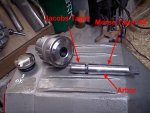
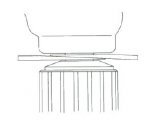
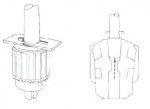
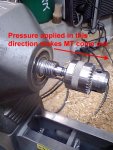
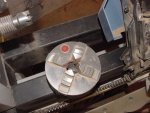
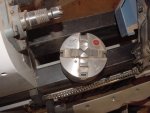

 Turners following the RULES!!!
Turners following the RULES!!! 